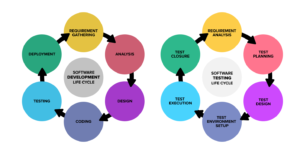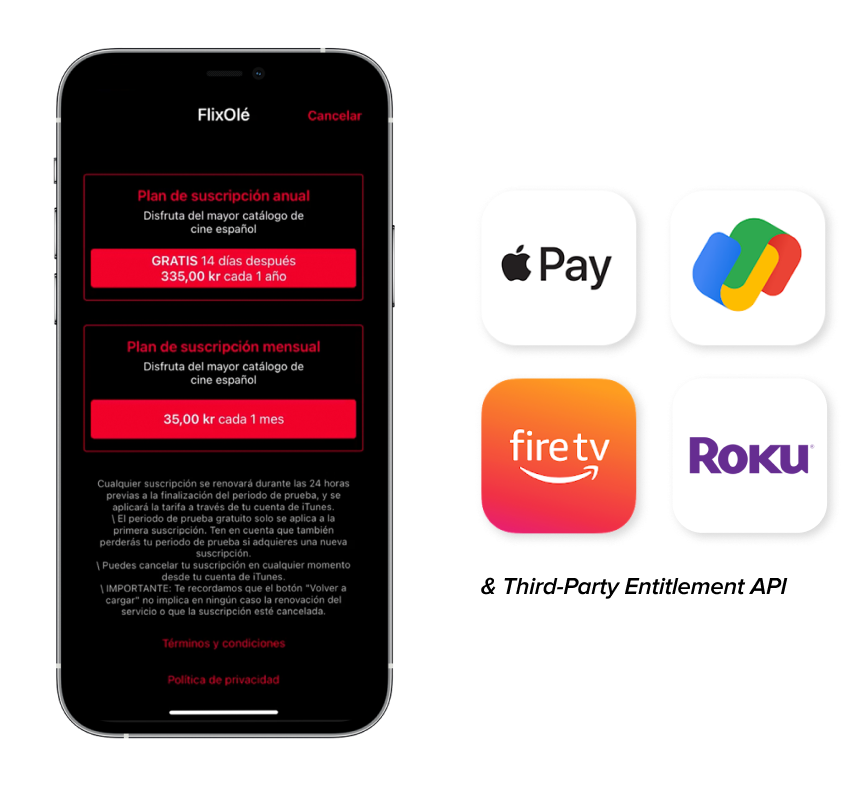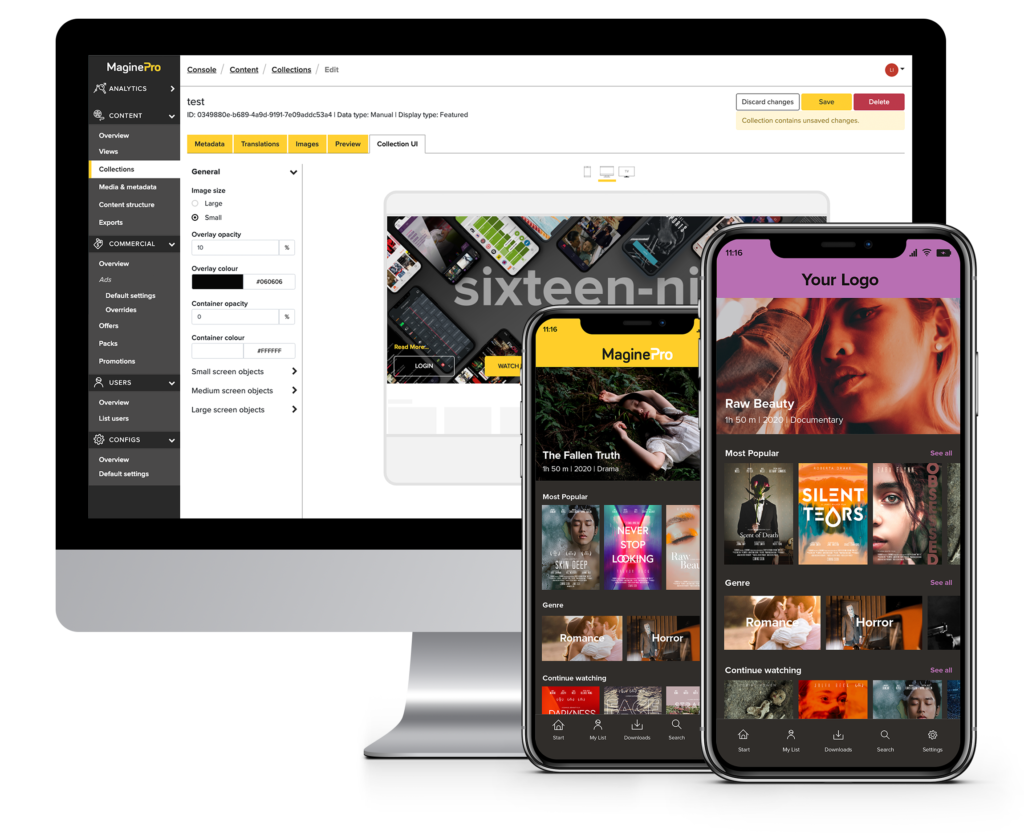Mastering the Mix: How to Harness the Power of Hybrid Monetisation for OTT
In the dynamic landscape of streaming services, the adoption of hybrid monetisation models is reshaping the industry’s approach to revenue generation. Unlike traditional models, hybrid strategies seamlessly integrate subscription, transactional, and advertising elements, offering a versatile and adaptive solution for both providers and consumers.
For consumers, hybrid models translate into a more dynamic and engaging viewing experience. The mix of subscription content, exclusive purchases, and targeted advertisements creates a diverse content ecosystem. Viewers can explore a wide range of offerings, discovering new content while enjoying the benefits of their chosen monetisation model.
For providers, hybrid enables them to experiment with different models to find the optimal mix that suits their content, audience, and market conditions. This flexibility enables them to adapt to changing trends and consumer behaviour, reducing the risks associated with a rigid, single-tier approach. To ensure the successful implementation of a hybrid monetisation model, a robust strategy is essential. Here’s our perspective on the key priorities that providers should focus on to fully benefit from a hybrid approach.
Making Hybrid Monetisation Work: What’s Needed
- User-Centric Approach: Understanding user preferences and behaviour is crucial. Service providers must tailor their hybrid models based on audience demographics, consumption patterns, and market trends to ensure maximum effectiveness.
- Seamless Integration: The success of hybrid monetisation hinges on the seamless integration of subscription, transactional, and advertising components. A well-designed user interface and clear communication about the different offerings create a positive user experience.
- Data-Driven Decision Making: Leveraging data analytics is essential for optimizing hybrid models. Analysing user data helps providers identify trends, preferences, and areas for improvement, enabling them to refine their strategies and content offerings.
Achieving Success with Hybrid Monetisation
- Strategic Content Curation: Offering a diverse range of content that caters to different user segments is key. This includes a mix of subscription-based, transactional, and ad-supported content, ensuring there’s something for everyone.
- Innovative Marketing Campaigns: Providers should implement creative marketing campaigns highlighting their hybrid model’s benefits. This could include promotions, exclusive previews, and limited-time offers to entice both existing and potential subscribers.
- User Education: Communicating the advantages of the hybrid model to users is crucial. Service providers should educate their audience on the value of each monetisation element and how it contributes to an enriched streaming experience.
The rise of hybrid monetisation models marks a pivotal moment in the evolution of streaming services. By combining the strengths of subscriptions, transactions, and advertising, both service providers and consumers stand to benefit. Providers can better navigate market fluctuations and economic uncertainties with greater resilience, as viewers benefit from a more personalised and adaptable streaming experience.
Explore the depths of hybrid monetisation models and strategies by accessing our newest FREE white paper, The Profit Playbook: Proven OTT Revenue Growth Tactics. Gain valuable insights and strategies aimed at reducing churn and maximising long-term revenue. Additionally, its companion e-guide, The Essentials of OTT Monetization: A Guide to Revenue Success, is ready for download, which meticulously navigates the intricacies of subscription, transactional, and advertising models, revealing the power of a carefully crafted hybrid approach to enhance financial resilience amid market fluctuations. Further resources on monetisation and Magine Pro’s billing capabilities can be found on our blog.
If you’re interested in discussing monetisation models and the capabilities of Magine Pro’s advanced billing engine, connect with our experienced team. To stay in the loop, subscribe to the Magine Pro e-newsletter, for all our latest news, partnerships, and products, and to find out which industry events we’ll be attending next.
A Guide to Content Curation for an Improved End-User Discovery Experience
These days, video streaming services rely more and more on recommendation algorithms to surface content for their viewers. While this can be helpful in many ways, it also makes it difficult for viewers to discover content they may have yet to see or search for otherwise. This is where human content curation comes into play. By creating video categories beyond traditional genres, viewers can better discover and watch content they may never have known existed.
Curating content categories that are original and exclusive to your service is a fantastic way to boost brand identity and promote content discovery. For example, consider seasonal or topical themes or categories based on popular actors or films, making it easier for viewers to find the content they may miss.
Exploring user data to identify what types of content are most popular amongst your viewers (including in different markets) can be a great starting point for category inspiration. It’s also an excellent way to discover what existing content from your library is worth investing in further or resurfacing.
The Magine Pro CMS Console offers our partners fantastic flexibility for manual category curation. We enable operators to configure collections of content independently, including selecting specific video content, category titles and determining where collections appear on the discovery page. Our partners can also boost the prominence of select categories by setting larger thumbnail image sizes for featured content. Follow our step-by-step below within the CMS Console and configure a unique collection of content for your viewers.
Content Curation with Magine Pro’s CMS Console
To learn more about content curation and how categories can be configured within the Magine Pro CMS Console, head over to our knowledge base, and explore other comprehensive content curation and content design guides.
You can also get in touch with the team for more guidance on content curation and customising a Magine Pro-powered streaming service. Check out our blog for additional insights, including a recent post on why curation is key to reducing churn. And learn more about our flexible OTT platform and how we enable our partners to monetise their live events, linear and VOD content seamlessly.
Branding: How to configure your service & build user trust
Strong branding is essential for any business looking to build trust and loyalty amongst its users. Branding gives a company identity and helps create an emotional connection with customers that goes beyond just the product or service they offer. A good brand will make a user feel more confident in the product and assured that the company also stands behind what they’re offering.
Building a positive brand should be of particular focus for online streaming services that operate in a saturated market. Branding helps to differentiate services from one another, especially those with similar entertainment offerings. Differentiation can be achieved aesthetically through design elements such as logos, colour palettes, fonts, etc., with messaging about the brand, what it stands for, and overall tone of voice, helping to create the personality. Consistent messaging across all platforms is imperative though, as along with the design elements, you can create a unique story about your business that builds trust and a connection with your audience.
At Magine Pro, we understand how important branding is to your business, which is why our video streaming services can be customised to feature your logo, brand colours, editorial and content. Our partners can seamlessly configure branding within their service via the CMS Console.
How to configure branding within your Magine Pro-powered streaming service
Consistent brand identity promotes familiarity and ensures audiences recognise and remember a brand later on – making it easier to market additional or new products or services. For streaming service operators, becoming a trusted, go-to source of entertainment will make people more likely to recommend it to others. However, building trust is not a one-time event. Branding efforts should be ongoing and adapted as your business evolves. Keep users engaged and loyal by sticking to your set values, responding to user feedback, and sending regular and engaging communications and offers.
Get in touch for more guidance on branding, including how to customise your Magine Pro-powered streaming service. You can also check out our blog for additional insights into launching a successful OTT business. To lean more about our flexible OTT platform and how we enable our partners to create a video streaming service to monetise their live events, linear and VOD content seamlessly through subscription, advertising and/or transactional business models, head here. You can also book a meeting with a member of the Magine Pro team today and discuss our OTT platform and video streaming solutions in more detail.
Quality Assurance at Magine Pro – How we ensure the best streaming experience
My name is Ksenia, I’m a Quality Assurance Engineer within one of our backend teams and in this blog post, I will share insights about the Quality Assurance (QA) process here at Magine Pro.
The QA process is a critical component of any successful software project. QA is important in a product like a streaming platform for several reasons, both from the user and business perspectives.
From the user perspective, a high-quality streaming platform can significantly enhance the user experience, which is critical to user satisfaction. With a robust QA process, the platform can ensure streaming quality is consistent and reliable. And users are more likely to return to a platform.
From the business perspective, QA is crucial because a reliable and high-quality platform can attract more users, which can increase the platform’s revenue through subscriptions. Moreover, a platform with a poor QA process can result in negative reviews and feedback from users, which can harm the platform’s reputation and lead to lost revenue.
The QA process is responsible for ensuring the software meets the required quality standards and performs as expected. It involves a series of testing and analysis techniques that are designed to identify and resolve issues or bugs in the software.
We will explore the various stages of the QA process, including planning, design, and execution, and how they contribute to the overall success of a project. So, let’s dive in and explore the world of QA!
Our QA process consists of several steps:
- Requirements Analysis
- Test Planning
- Test Design
- Environment Setup
- Test Execution
- Test Closure
- Requirements Analysis
Our team has a refinement meeting where the product manager introduces a new feature to us and we ask questions about the functionality, purpose of the feature and clarify the requirements. As a QA engineer, I prepare high-level test cases which will make sure everything works as expected in the next steps of the development process. We use Jira here for keeping our requirements and Google Spreadsheets to track the traceability between requirements and tests.
- Test Planning
When the high-level test cases are ready I sort them by priority. Also in this step, it is essential to understand if we have dependencies with other functionality and if so include them in the planned checks.
- Test Design
Based on the requirements and high-level test cases, I go on to create detailed test cases and figure out what test data we need to run the different tests. And think over the test data we need for tests. Then I create automation tests for the most critical cases. To automate tests, we use the Assertible no-code tool in tandem with the Ngrok service, which provides Assertible with a secure and safe connection to our internal services. For our manual test cases and checklists, we use Google Spreadsheets.
- Test Environment Setup
I ensure the component versions are in the test environment and prepare test data for test cases.
- Test Execution
As I mentioned, I’m from the backend team, so I do testing mostly on the backend side where the logic is stored. I execute manual and automated test cases that were created on the Test Design step in our integration environment and check the feature works according to requirements, API calls correspond to the expectations, and ensure there is nothing suspicious in the logs.Also at this stage, we check the implemented functionality has not introduced new bugs, and run a suite of regression tests in Assertible. A regression test suite is a set of tests that cover existing functionality and are continually updated and extended. After a new feature is implemented, the tests developed for it go into the regression suite.I also run some tests on the front-end side to make sure it integrates well with the backend. I report the issues which were found during testing and once the defects are fixed, I retest functionality to ensure that the defects have been resolved and haven’t introduced new bugs. We have a lot of monitors and dashboards and a good logging system where we can see the system state in real-time and it is actively used during testing to check the status of the services.One of the important steps here is acceptance testing. This is the final test execution step which includes two activities in our process.
A. Mob testing: This is an activity in which we get together with QAs from other teams and our Product Manager and check new features against requirements. As soon as this step is done we can deliver the feature to production.
B. Acceptance test: Our partners can also make an acceptance test and ensure that the product meets the expectations.
- Test Closure.
I ensure once more that critical bugs found are fixed, set the regression schedule and post the report about the test results and links to test documentation and new automated tests in the Jira ticket.
All of our features go through these steps and we think about quality from users’ and partners’ perspectives. For example, during hack days for the Recommendation system, we checked all used internal components were integrated well without any issues with existing functionality. We checked if the customer could configure the recommendation collection and made sure that this collection is available for the user and shows unique content to each user based on their data.
This is our current process which constantly changes and adapts for business purposes. A well-designed QA process can help ensure that products meet the desired level of quality, and functionality, while also minimizing the risk of defects and errors.
_______________________________________________________________________________
Find out more about Magine Pro’s extensive library of technical resources and experienced team that enable our partners to deliver seamless streaming experiences on all devices here. You can also head over to our experience page to learn more about our partners.
Don’t forget to subscribe to the Magine Pro e-newsletter to stay up-to-date with our latest news, partners, products, and to find out which industry events we’ll be attending next.
How to set up a streaming service for success before signing a service contract

GET A PROFESSIONAL TO CREATE YOUR BRANDING FOR YOU
You need a great brand, and you need it to be unique. You need a catchy name, one that people will remember. You also need a logo and colours that will make your brand stand out from the crowd. You can create your own branding or hire someone to do it for you. It’s better to have someone with experience and knowledge of how streaming services work.
This will cost money, but it’s an investment that will pay off in the long run. A professional will be able to create a logo and colour scheme that reflects the feel of your brand, and they’ll make sure everything is designed in a way that’s easy to read on different devices.
WRITE TERMS AND POLICIES FOR YOUR SERVICE
Yes, most of your customers will not read your terms and conditions or your privacy policy. You need to have them anyway for two reasons:
- Payment gateway and app store providers will request them before you can sign a contract or release apps.
- They define the relationship with your customers. They give you a framework of what you can and can’t do. And tell your customers what they can and can’t do.
Writing legal texts usually takes the longest so you best get to it as soon as possible. If you are wondering what should be included you can have a look at other streaming services.
SIGN UP FOR A PAYMENT GATEWAY
Earning money with your content is probably your most important goal. If you want to sell subscriptions or rental content you will need a payment provider that
- can handle transactions
- support your preferred payment methods
- allow you to handle refunds and payment disputes
- helps you to prevent fraud and manage risk
- gives you the necessary financial reports
Magine Pro is already integrated with Adyen and Stripe, two reliable and professional payment gateways with a wide range of supported payment methods. Signing up with them can take some time. If you have a business plan and at least an outline of your terms and conditions you can start the conversation with your preferred provider.
When the contract is done the technical integration takes only a few hours and you can test the full purchase flow the same day.
You can also sell subscriptions through apps. Besides an app store account you need a merchant
agreement with the store provider. Don’t let the revenue share discourage you from using this opportunity. Apple, Google and Amazon have launched Small Business Programs that reduce the revenue share from 30% to 15%.
STRUCTURE YOUR CONTENT
Content is king! That saying still rings true. Potential customers will choose a streaming service mainly because they are interested in the content.
It is one thing to transcode the content. The big organisational part is actually knowing how you want to sell it. You can plan ahead by structuring your content into bundles.
Want to give access to everything? – Create one bundle.
Want to sell theme packages? – Create a bundle per theme.
Want to combine subscriptions with rentals or Pay per views? – Create a bundle for the subscription and one bundle per rental or Pay per view.
Prepare your metadata:
- Get images: 16:9 and poster
- Have a title, short synopsis, cast, directors, genre and any other essential information you think is necessary to present your content
- Add labels. In the Magine platform labels are used to categorise content e.g. for collections without presenting the label to the customers.
Last but not least, think about translations. If you offer your service in multiple countries with different languages you will need translations of your metadata.
CREATE A MARKETING STRATEGY
For your streaming service to stick out from the crowd you need to know your target users very well. If you know where they are it will be easier to find channels to address them. Partnerships can help you to increase your reach and raise brand awareness.
At Magine Pro we can support your efforts with:
- Dynamic links
- Push notifications
- Integrations with content discovery services as Just Watch and PlayPilot
- Marketing integrations through Google Tag Manager e.g. Gift cards, referral and affiliate programs
And when you think about the price point for your content, don’t give everything away for free. Sure discounts help to increase the interest in your service. Giving away your content for free first in a trial and then with 100% discount will leave your customers wondering if your content is actually worth something. Be brave, charge something even if it’s nominal.
PREPARE YOUR SERVICE FOR SUCCESS
Finding the right vendor for your streaming service can take time. There are plenty of details to discuss. Use the time to prepare yourself and your team. Planning out your streaming service before you agree to any contracts will make the process more manageable after the agreement is signed. It will help you to launch your streaming service on time and beat the competition. At Magine Pro our onboarding specialists will guide you through the setup process.
Magine Pro offer a flexible OTT platform that can be customised according to your needs. Create a video streaming service with us and monetise your live events, linear and VOD content seamlessly through subscription, advertising and/or transactional business models. What’s more, we have a team of experienced experts on hand who can help you launch and grow your OTT business successfully. And if you’re interested in learning more about how we can help you build and launch a successful OTT business, get in touch with us today.
Promo Codes: How to set up and why they’re important
In this blog, we explore the benefits of promo codes for marketing campaigns and highlight why you should use them to increase customer acquisition, engagement and retention. We also take you step-by-step through setting up a promotional code for your Magine Pro-powered streaming service.
How promo codes can positively impact growth and subscriber retention
Promo codes are a great marketing tool for streaming service operators to attract new customers and retain existing users. For example, promo codes offering a lower price for the first month or year subscription will expand your reach and entice potential customers who may not have otherwise considered signing up to your service.
Promo codes can also help encourage existing users to stay by showing that you appreciate their business and that you’re willing to work with them to provide the best possible value. Do this via subscription discounts or loyalty rewards that give them first access to new content, for example.
Ultimately, promo codes are an effective tool for both subscriber retention and growth.
- Increase customer loyalty by providing a discount to customers who return to your service.
- Attract new customers by providing a discount on their first purchase.
- Boost sales during slow periods by providing a temporary price break.
How to set up a promo code in your Magine Pro-powered streaming service
Check out our complete step-by-step guide on setting up a promo code for your streaming service via the Magine Pro CMS Console:
Top 3 tips for promo code campaigns
- Keep it simple
One common mistake is to make promo codes too complicated. A long and confusing code is more likely to be ignored than a simple one.
- Use regularly
If customers only see promo codes a few times a year, they may forget about your brand or feel like they’re missing out on potential savings. To get the most out of promotions, try using them regularly.
- Make it worthwhile
When planning a promo code campaign, make sure that the discount offered is significant enough to be worth the customer’s time and effort. Promo codes should incentivise customers to sign up and/or stick around.
If you need more information on setting up a promo code in your service, head to our knowledge base or reach out to a member of the team.
Want to learn more about improving customer acquisition, subscriber retention and engagement for your streaming service? Our white paper ‘OTT Discovery: How to stand out amongst the crowd‘ features some useful insights. You can also check our blog for more practical advice, including 5 reasons you should offer Day Pass access to your streaming service.
If you’re interested in learning more about our flexible OTT platform, our partners and how we can help you build and launch a successful OTT business, get in touch with us today.
5 ways to reduce your OTT subscription churn rate
It’s much harder (and more expensive for that matter) to attract new subscribers than it is to keep the ones you already have. It’s a competitive landscape, and with so many OTT services offering low entry barriers and free trials, it’s much harder to encourage users that switch from service to service to stick around and stay loyal. Without a doubt, you’ll need a solid strategy to keep your users engaged and successfully reduce churn. To help you get started, we’ve outlined 5 of the best ways to reduce churn and build a positive user experience to boot.
1. Keep things fresh
Regularly adding new content to your service is a great way to ensure your users return and remain engaged. Give them a reason to stay active and even recommend the service to a friend by adding new content every week or month. You can also try changing the content that’s displayed on the start page – hero existing content that your users may not have seen yet. Even regularly updating the content artwork can help make your service feel new and fresh to users.
2. Maintain a buzz
Don’t expect your subscribers to stick around after they’ve signed up, you still have work to do. Continue to reach out to your users via email and on social channels to let them know what’s available to watch or what’s coming soon. Build and maintain the buzz around your service to keep users engaged and active.
3. Give back
Let your subscribers know you care and increase value by offering loyalty based subscription discounts or surprise download giveaways. You can even promote bonus offers for those who recommend your service to their friends.
4. Re-engage inactive users
Don’t let subscribers slip away, entice inactive users back to your service with targetted marketing and promotions. You can do the same for those who have recently canceled their subscription; remind them you exist, what they’re missing and make it easy to get back on board!
5. Keep up appearances
It’s important to maintain your OTT service. You don’t need to offer the latest features but it should be easy for users to manage their accounts and payments. A user-friendly interface is essential and video streaming should always be seamless.
_______________________________________________________________________
Want more advice and support on reducing churn rates? Get in touch with the Magine Pro team and find out how we can help.



